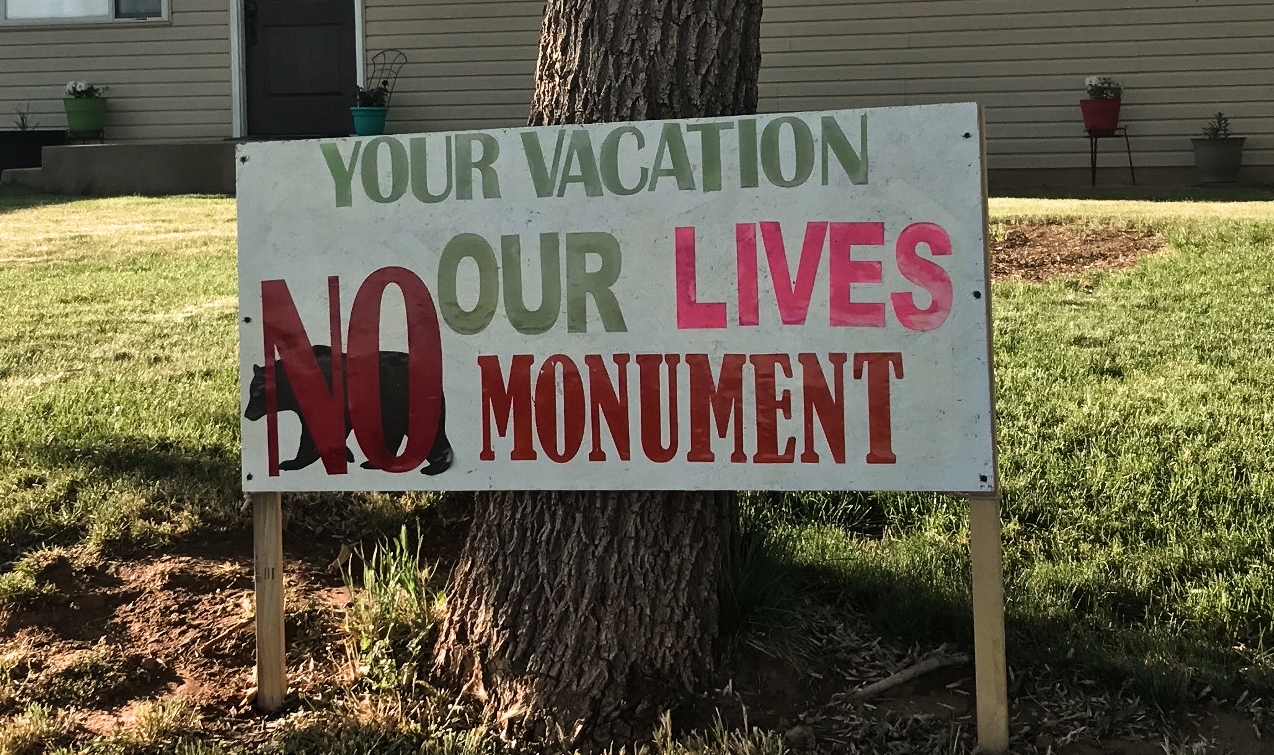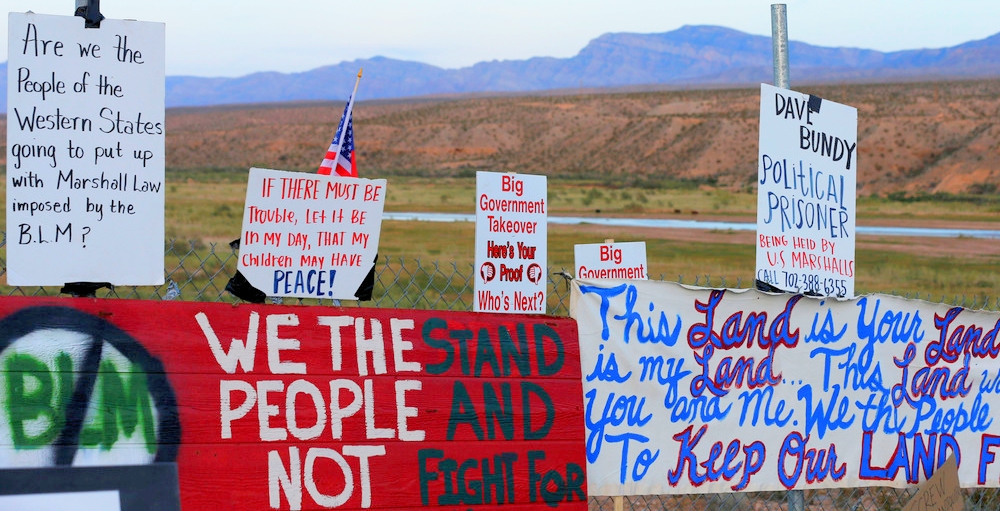Any honest reading reveals that it was created to protect “landmarks,” “structures,” and “objects” – not vast swaths of land. Compare the language of the law and the historically obvious intent of the Congress that passed it – at the time it was even debated whether the law should limit designations to 320 or 640 acres – with its abuse over the last half-century. Presidents have repeatedly flouted the rule of law and usurped the powers of Congress to arbitrarily cordon off millions of acres of land.
Editorial by Representative Rob Bishop
Washington Examiner
This editorial was published in the Washington Examiner in two parts over a two-day period. Click on these links to view Part I and Part II as originally published.
Antiquities Act is a menace to constitutional government
You heard it in your high school civics class: America has “a government of laws and not of men.” The rule of law is the basis of the constitutional order erected by the Founders. “A government with unpredictable and arbitrary laws poisons the blessings of liberty itself.” The first axiom is from John Adams, the second is from James Madison. Their sentiments were universal in the founding generation and ought to continue today. Checks and balances have no teeth when our leaders can disregard the laws and rule according to their whims.
I said that the rule of law should still be the foundation of our politics. Unfortunately, that certainly does not mean it is not threatened. There is no more flagrant violation of this principle of our government than the repeated abuse of the Antiquities Act in the designation of national monuments. Passed in 1906 authorizing the president to protect “antiquities,” or objects of historic interest under imminent threat, the plain language of the law requires that all designations be “confined to the smallest area compatible with proper care and management of the objects to be protected.”
The act is not difficult to understand. It is not ambiguous. Any honest reading reveals that it was created to protect “landmarks,” “structures,” and “objects” – not vast swaths of land. Compare the language of the law and the historically obvious intent of the Congress that passed it – at the time it was even debated whether the law should limit designations to 320 or 640 acres – with its abuse over the last half-century. Presidents have repeatedly flouted the rule of law and usurped the powers of Congress to arbitrarily cordon off millions of acres of land.
A few statistics can illustrate the scope of the overreach. Between 1906 and 1943, the law functioned basically as designed. Presidents respected the intent of the act. Most monuments were smaller and had clear boundaries with real antiquities inside them. By contrast, designations under the act last year averaged 739,645 acres, or more than 47 times the size of those created 110 years ago.
President Teddy Roosevelt was the first president to use the act. He used it 18 times for a combined total of 1.5 million acres. President Barack Obama used it 37 times to designate 553.6 million acres of land and water.
Let that sink in: 553.6 million acres (more than half a billion). That is an average of 189,000 acres designated with the stroke of a pen for every single day Obama was in office. It’s 830 times the size of Rhode Island, and more than 5 times the size of California.
Actions such as these are not the rule of law. It is arbitrary rule by one man.

The argument that recent uses of the act have conformed to the law’s legal limitations would be funny if it wasn’t so damaging. The law has been distorted beyond recognition by presidents who have used it to circumvent Congress, impose pet policies of Washington elites and radical special interest groups on local communities, and, most significantly, chip away at the traditions of rule of law and checks and balances.
To vest one man with the unfettered power to make these decisions with no congressional check or local input would have been repugnant to the Founders. It should also be repugnant to each and every member of Congress who has taken an oath to support and defend the Constitution and the impartial rule of law.
Even with noble intent, a benevolent dictator is still a dictator. Our temporary reprieve under the current administration must not blind us to the threat of future overreach that still lurks on the horizon. As long as future presidents can shrug off requirements of the law and govern by fiat, we can be sure this will happen again.
The public debate sparked by the monument review process is a good thing, and I am hopeful that President Trump will heed Secretary of the Interior Ryan Zinke’s advice and ameliorate some of the damage done by previous administrations. However, it is at best only a first step, and, in the absence of additional congressional safeguards against executive overreach, merely a band-aid — not a solution.
The rule of law is not a matter of partisanship, but of principle. We can debate the appropriate balance between conservation and development, but political victories should not be won at the expense of the cornerstone of constitutional government. The time has come for Congress to reform the Antiquities Act and rein in the president.
Restore the Antiquities Act’s noble vision
In a Tuesday op-ed, I explained the constitutional threat posed by the Antiquities Act, and why its repeated abuse is inconsistent with the constitutional pillars of the rule of law and checks and balances. As it turns out, there’s a reason the Founders chose these principles as the basis of our government: arbitrary rule has no incentive to be accountable to the people that policies affect. Without that accountability, political and ideological manipulation corrodes the balance of power.Some of the most egregious abuses – the use of the Antiquities Act as a political weapon – happened under President Bill Clinton’s administration.
In 1996, prior to the designation of the Grand Staircase Escalante National Monument in Utah, Clinton’s then-Chair of the Council on Environmental Quality Katie McGinty stated the following, “I’m increasingly of the view that we should just drop these utah [sic] ideas. we [sic] do not really know how the enviros will react and I do think there is a danger of ‘abuse’ of the withdraw/antiquities authorities especially because these lands are not really endangered.”
Could there be any clearer statement of the prioritization of political ideology over the will of people?
The monument was designated in the waning months of Clinton’s re-election campaign. Its total acreage: 1.7 million — three times the size of Rhode Island. No town halls, no public meetings, and no public comment sessions were ever held in Utah. No input was solicited from local stakeholders or land managers in the area. Utah’s governor, congressional delegation, public officials, and residents from across the state all expressed outrage at the lack of prior consultation or warning of the designation. In what feels like symbolism, the proclamation wasn’t even signed in Utah; it was signed in Arizona.
This story is one of many blatant abuses of the Antiquities Act.
The Trump administration is currently reviewing previous designations to ensure they’re consistent with the law’s intent. Without President Trump having even exercised his authority under the law, Democrats are making every attempt to force the release of the administration’s ongoing deliberations. In a rich irony, for the first time, they are demanding that local communities have a voice in the president’s use of the Antiquities Act.
“Let’s see some transparency and public accountability,” House Natural Resources Committee Ranking Member Raul Grijalva, D-Ariz., recently said.
Sen. Martin Heinrich, D-N.M. said, “The public deserves better than predetermined political conclusions.” The executive must “listen to and work with local communities,” he added.
If only their thirst for accountability had made an appearance when previous administrations, in processes shrouded in secrecy, brushed aside the objections of local communities in Utah and other states.
Nonetheless, for those of us who have fought to bring some level of accountability to the law’s use, this newfound desire for it is welcome. Ironically, it is also an admission of the act’s underlying failures.
Last week, I introduced legislation to correct these failures and permanently address my colleagues’ concerns. The National Monument Creation and Protection Act would, like the writers of the Antiquities Act intended, allow the president to unilaterally designate land up to 640 acres. Monument designations between 640 and 10,000 acres would be subject to review under the National Environmental Policy Act. Designations between 10,000 and 85,000 acres would be required to obtain the approval of all county commissioners, state legislatures, and governors in the affected area. The bill also standardizes and limits the president’s power to reshape monuments.
No longer would we have to blindly trust any president to do the right thing. These provisions ensure consultation with locals and robust scientific evaluation through public processes that would be required by law. It strengthens the president’s authority to protect actual antiquities without the threat of disenfranchising people.
If my Democratic colleagues are serious about their calls for accountability, they will support this bill. Together, we have an opportunity to place people over politics and the rule of law over tyranny.
The Antiquities Act was created with noble intent, tailored for specific uses and limited circumstances. Let us restore this intent and enshrine that vision in law.
[paypal_donation_button]
Free Range Report
[wp_ad_camp_3]
[wp_ad_camp_2]




The current NV Congressional Delegation [Harry Reid’s aftermath] is the only State in this nation that supports all past & future fed land locks:
https://westerncaucus.house.gov/news/documentsingle.aspx?DocumentID=1232